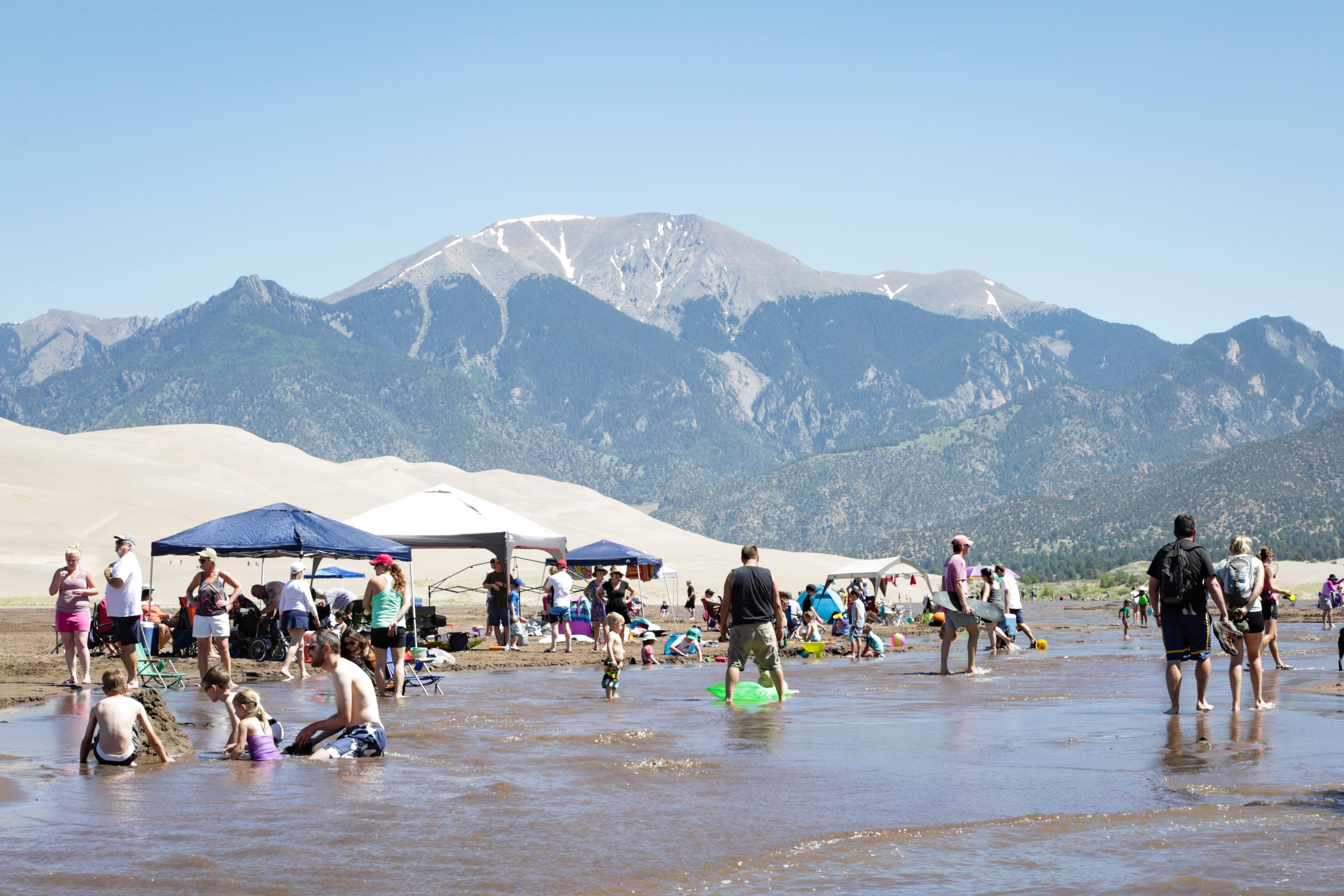

Coloradans don’t have to travel far to get to a beach with waves, according to National Parks officials.
Every year, melting snowpack creates a so-called surge flow in the Medano Creek in the Great Sand Dunes National Park. The surge can send waves up to three feet tall lapping onto the dune field, according to park official Eric Valencia.
What’s called “Colorado’s Natural Beach” draws tens of thousands of visitors during peak season.
“The stream surge is actually quite a unique phenomenon,” Valencia said. “As the water flows through the sand, the sand begins to kind of tumble down and eventually it will create a small dam. The pressure of the water will break that dam of sand and it forms a wave.”
The underwater ridges break around every 20 seconds to create a wave.
The dunes are located in the Southern Colorado Rocky Mountains. The water from upstream spreads out at the foot of the dunes into wide, shallow water.
Medano Creek has exhibited some surge flow despite cold temperatures and slow snow melt this spring, according to the park.
The pressure of the water flow is measured in cubic feet per second. As of May 31, the flow is only 22 cfs. The park calls this small surge flow. The flow typically peaks in late May or early June with around 40 cfs.
Snowpack in Medano Pass is currently over 160 percent of normal. Because of that above-average snowpack, peak flow for Medano Creek is forecast to be sometime in the first half of June rather than the typical late May. The park also expects some shallow flow through July.
Peak flow weekends tend to bring the highest number of visitors each year to the park. Valencia said visitors play in the water, skimboard, raft and make sand castles.









